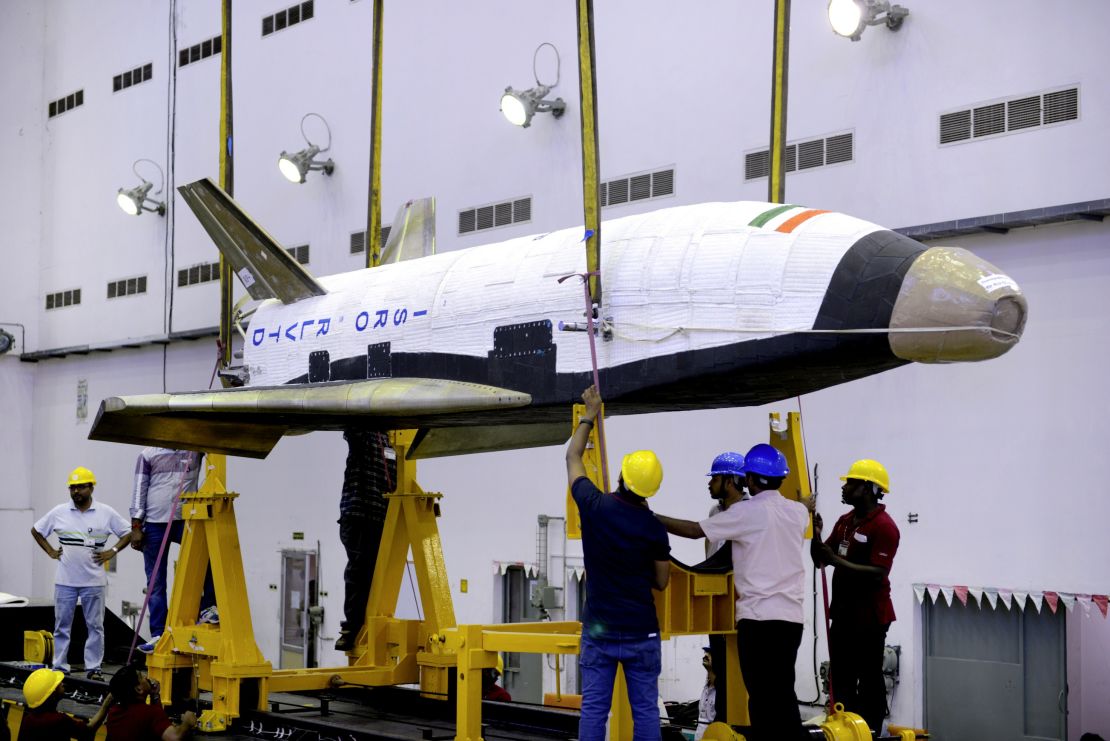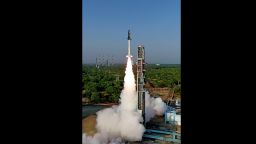Story highlights
India successfully tests first 'space shuttle'
Craft is a prototype of a re-usable launch vehicle
It’s one small step for India, but a potentially giant leap for cheaper space travel.
In the early hours of Monday morning, the Indian Space Research Organization (ISRO) successfully launched its first “Re-usable Launch Vehicle,” which at full-size will be able to lift satellites into orbit.

Scientists launched the unmanned model to a peak altitude of 65 km (40 miles) before turning it around for a controlled descent into the Bay of Bengal. The total flight lasted about 13 minutes.
“We are very excited,” said Deviprasad Karnika, a spokesman for ISRO. “The team has been working on the project for the past 10 years, with the past five spent on designing the actual model.”

But Karnik cautioned that there was a long road ahead.
“This is just an experiment, which is a baby step to the final reusable launch vehicle which will take years to realize,” he told CNN a week prior to the launch.
There is no concrete next step for the team, but to analyze the data for now, he added.
Crazy-looking airplane flies in to history books
India’s Prime Minister Narendra Modi was quick to congratulate the team on a successful launch.
He tweeted from Tehran, where he is meeting with Iran’s President Hassan Rouhani:
“The dynamism and dedication with which our scientists and ISRO have worked over the years is exceptional and very inspiring.”
Mars and Earth are getting closer
India has become known for its budget-savvy space ambitions. Monday’s successful test of the homegrown model cost just under one billion rupees ($13.3 million) to develop. This is significantly less than the $60 to $90 million price tag of SpaceX’s rockets.
And this is not the first time India been economical while developing their space program. The nation made waves in 2013 when it launched a spacecraft to Mars for a fraction of what it cost NASA.
Additionally, traditional rockets are often disposed of after they detach from a spacecraft or burned up upon re-entry into Earth’s atmosphere. The fact that the vehicle is potentially recyclable could slash the cost of future missions and make space travel cheaper. ISRO spokesman Karnik explained that presently 80% of the cost of a mission goes toward devloping a craft which cannot be reused.
The U.S. ended its space shuttle program in 2011 but Japan, Russia and Europe are also currently developing similar reusable technology.
SpaceX makes historic rocket landing
In December 2015, SpaceX, a private company led by entrepreneur Elon Musk, successfully launched and landed a full-size reusable rocket, Falcon 9. But Amazon CEO Jeff Bezos’ space company, Blue Origin, beat its rivals by successfully launching and landing a rocket in November, though its flight was shorter.


















